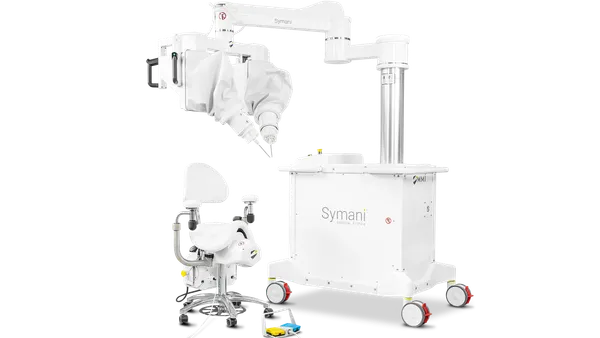Dive Brief:
- Medtronic’s Resolute Onyx coronary stent was found to be as effective and safe as the Orsiro ultra-thin-strut stent made by privately held Berlin-based Biotronik.
- The two stents were compared in a head-to-head clinical study of 2,488 patients powered to determine non-inferiority. Results of the companies-funded study were presented Saturday at the Transcatheter Cardiovascular Therapeutics (TCT) meeting in San Diego.
- At one-year follow-up, the primary study endpoint of target vessel failure (TVF), a composite of cardiac death, heart attack or need for repeat procedure, occurred in 55 (4.5%) of the 1,243 patients who received the Resolute Onyx stent and 58 (4.7%) of the 1,245 patients who got the Orsiro implant.
Dive Insight:
Medtronic has seen robust demand for the Resolute Onyx stent since its launch in May 2017. The company last month reported U.S. revenue growth in the first quarter was in the low-thirties on a percentage basis for the product in the United States and said Resolute Onyx drove double-digit growth for its drug-eluting stent business overall.
In the new study, researchers sought to compare Medtronic’s latest-generation device with the Orsiro stent because the latter showed positive effectiveness and safety outcomes in multiple randomized clinical trials, the Cardiovascular Research Foundation (CRF), sponsor of the TCT meeting, said in a press release. The head-to-head study of Resolute Onyx vs. Orsiro, called Bionyx, was funded equally by Biotronik and Medtronic.
Resolute Onyx is a polymer-coated zotarolimus-eluting stent with a thin wire strut platform that allows for better X-ray visibility. The stent’s composite wire has a dense platinum-iridium core and an outer cobalt-chromium layer. By comparison, Orsiro has a bioresorbable polymer coating and releases the drug sirolimus, and its cobalt-chromium strut platform is described as ultra-thin.
The study established the non-inferiority of Resolute Onyx to Orsiro. “Despite the difference in stent strut materials and thicknesses and the dissimilar durable and bioresorbable polymer coatings of the two study stents, the Bionyx study found no advantage for one stent over the other,” the trial’s principal investigator, Clemens von Birgelen, professor of interventional cardiology at the University of Twente in Enschede in the Netherlands, said in the CRF press release.
In addition, both stents demonstrated low rates of stent thrombosis, a blood clot complication that can lead to death or heart attack. Definite or probable stent thrombosis occurred in one patient (0.1%) in the Resolute Onyx group and nine patients (0.7%) in the Orsiro group.
“The low event rate in both groups suggests that both stents are safe, and the very low rate of stent thrombosis in the Resolute Onyx group warrants further clinical investigation,” the study’s researchers said in an article published in The Lancet.
In a separate press release from Medtronic, von Birgelen noted: “The stent thrombosis data are promising, but should not be overestimated as we cannot exclude a play of chance.”











